David's Diary: Friday, June 28, 2002
Rome - Vaticano
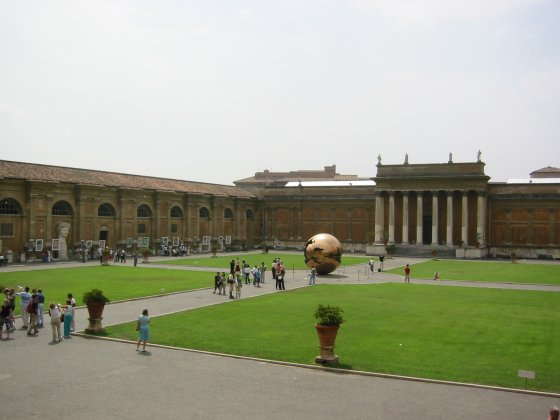
Courtyard Inside Musei Vaticani
Today our goal was to explore Vaticano, the country within a city. In English, we know it as the Vatican and it is the center of the Roman Catholic Church, where the Pope oversees one billion church members. In addition to being the spiritual center for Catholism, complete with its own post office, currency, flag, and anthem, it is also a place of great historical value.
We started our exploration inside the Musei Vaticani. The museum was started in the 13C and has been expanded ever since. But the museum is probably best known for being home to the Sistine Chapel.
For more pictures of the Vaticano, visit our Vaticano pictures Web page (part of our pictures of Rome). After looking at the pictures use your back button to return here.
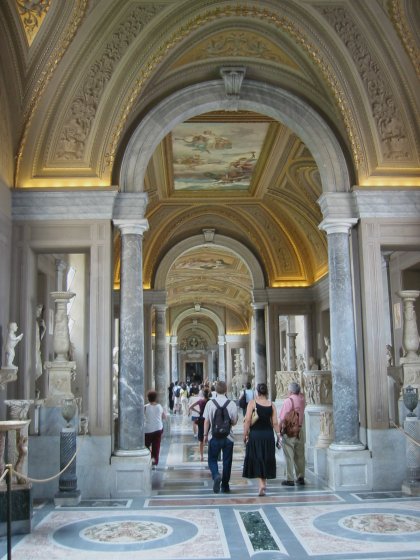
Musei Vaticani
In order to get to the Sistine Chapel, you walk through much of the museum. You could easily spend days looking at the collections or just soaking up the architecture. Beautiful marble columns, arches, and floors provide an elegant framework for the artwork on the ceiling and the statues that line the walls.
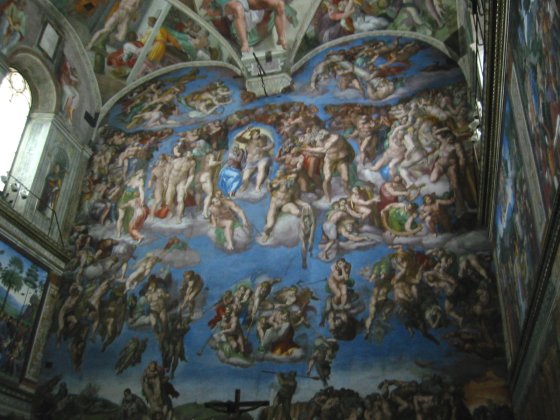
Last Judgement, Sistine Chapel
After a couple of hours of wandering through the halls of the Musei Vaticani, we went through a series of stairs and corridors until suddenly we were inside the Sistine Chapel. The chapel was completed in 1484 for Pope Sixtus IV. It is still used today -- it's most famous use is for the conclave to elect a new pope.
But the chapel is better known for the ceiling paintings done by Michelangelo between 1508 and 1512 and the Last Judgement painted when Michelangelo returned to Rome at the age of 59. Michelangelo thought of himself first as a sculptor and not a painter and he never wanted the commissions. For the ceiling, he ended up firing all of his assistants and single-handedly painting the entire ceiling himself.
You first enter the chapel through a door under the Last Judgement. After taking a few steps and finding a spot of your own within the crowds, you look up and marvel at the detail in the painting that covers the entire altar wall. The biblical scene shows the final Christian decision about whether you go to heaven or hell. We spent some time describing to Kevin and Allen the symbolism of the painting.
It is hard to believe how crowded the chapel gets and every five minutes a loud recording reminds everyone that they are to keep silent. With Kevin and Allen getting bored, it was a challenge to keep them from asking more questions as Karalee, Jocelyn, and I just stared and took in the detailed colours and forms of the ceiling paintings.
When we last visited the Sistine Chapel in the mid-eighties, the ceilings were just at the beginning of a long project to restore them to Michelangelo's original vision. Years of soot, dirt, and varnish used for preservation, and even some alterations ordered by popes long gone have been stripped away. In our last visit we only got to see two of the restored panels. This time, we absorbed the vibrant colors of all the chapel paintings, including the Last Judgement.
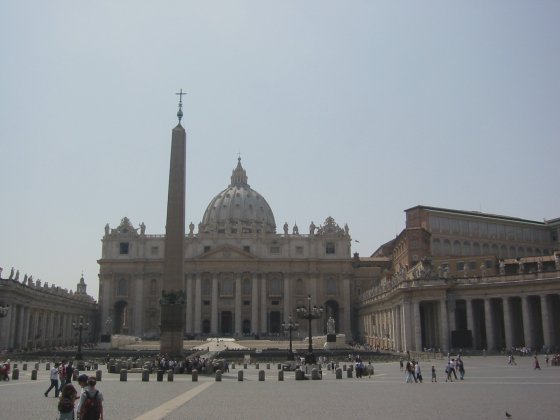
Piazza San Pietro
Eventually we could not resist the entreaties of Kevin and Allen to leave so Karalee, Jocelyn, and I reluctantly left the Sistine Chapel. After a long morning, we were ready to stop at the museum cafeteria for lunch. After our short break we left the Musei Vaticani and walked around the walls of Vanticano. Before we knew it, we had walked through the archways that led into Piazza San Pietro. The enormous plaza, laid out in the 17C, leads to San Pietro (Saint Peter's) cathedral. Larger than St. Paul's cathedral in London, it took more than 150 years to complete.
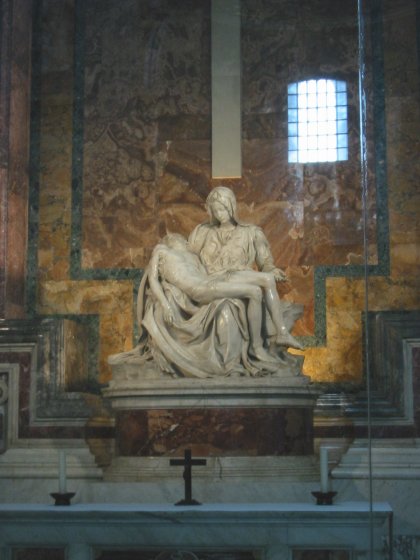
Michelangelo's Pietà
On the right as you first enter the church is Pietà, a statue that Michelangelo completed when he was only twenty-five years old and is the only work that the artist signed. The statue is now encased behind glass ever since a vandal attacked Pietà with a hammer in 1972. The statue is larger than life and we just spent time taking in its graceful lines as we worked our way through the crowd until we were at the barrier that prevents you from getting closer.
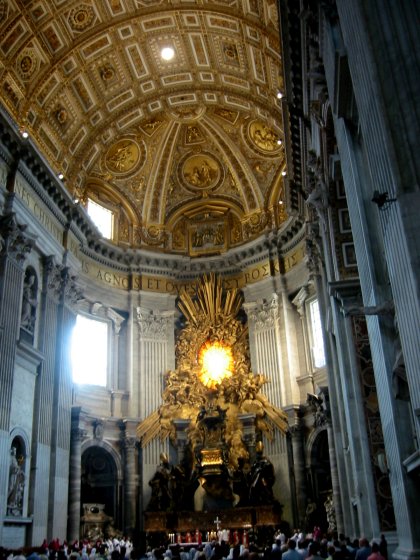
Basilica di San Pietro
The Basilica is so huge that you could easily spend a day there. We spent a couple of enjoyable hours exploring each part of the church and even going down into the crypt where we saw the tomb with the remains of St. Peter, who the Basiclica is named after. We stayed long enough to enjoy the start of mass and stood near the front of the church as the choir sang with the music echoing off the high ceiling which provided natural amplification.
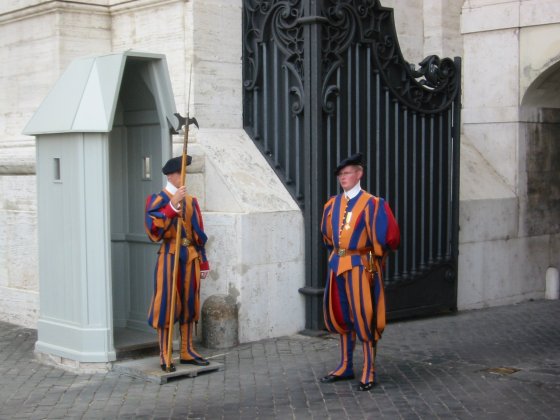
Swiss Guards
In 1970, Pope Paul VI dissolved the Vaticano armed forces, but he retained his Swiss Guard. Even today you see the Swiss Guards in their colourful uniforms guarding various parts of the city. After taking in our last look at Piazza San Pietro, we walked back to our subway stop and rode home to our hotel.
It had been a long day, so we all took an hour break before heading out around the corner from the hotel for a nice Italian dinner. Karalee, Kevin, and Allen headed back to the hotel after dinner, but Jocelyn and I did a little more exploring before stopping at a pub to listen to an Italian band do covers of mid-seventies American hits. The singer knew the words, but still had enough of an Italian accent that Jocelyn and I had to strain to make out the words. Still, it was fun to be there and a great way to end our Friday night.
